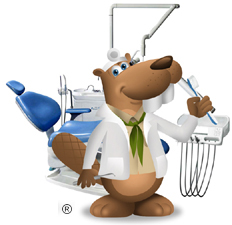Dentistry


Resources
- Dentistry Merit Badge Pamphlet
- Dentistry Class Preparation Page
- Dentistry Workbook
- Scoutmaster Bucky's Merit Badge Advancement Quick Reference
- Scoutmaster Bucky's Acknowledgement Form
Dentistry Requirements Current Scouts BSA requirements
as of November 1, 2025
as of November 1, 2025
1.
Using X-ray (radiographic) films or images and with your counselor's
guidance, do the following:
a.
Study the tooth structure and look for decay.
b.
Draw a lower molar, using the radiographs as a guide. Label its parts
and surfaces. Show surrounding structures such as bone and gum tissues.
c.
Show on your drawing where the nerves and blood vessels enter and leave
the tooth.
d.
Show on your drawing where bacterial plaque is most likely to be found.
2.
Do the following:
a.
Tell or write about what causes dental decay and gum disease. Tell how
each of the following contributes to dental decay and gum disease:
bacterial plaque, sugars, and acid.
b.
Tell the possible causes for traumatic tooth loss, describe the types
of mouth guards used to help prevent tooth trauma, and list the
athletic activities during which a person should wear a mouth guard.
c.
Explain the first-aid procedure for saving a tooth that has been
knocked out.
d.
Discuss how the use of tobacco products can negatively affect your oral
health.
3.
Arrange for a visit with a dentist. Before you go, ask whether your visit
can include a dental examination and a plaque-control demonstration.
Afterward, ask questions about things you want to know. Then tell your
counselor what the dentist does during a checkup examination.
4.
Do TWO of the following:
a.
Name at least five instruments and five pieces of equipment a dentist
uses.
b.
With the help of a dentist, prepare a dental stone cast using a
vibrator, a mixing bowl, a water measure, a plastic measure, model
stone, and a spatula.
c.
Keep a record of everything you eat for three days. Circle those items
that may provide the sugars that bacterial plaque needs to make acid.
List snacks that you should avoid to help maintain the best oral
health.
5.
Discuss with your counselor the following:
a.
How fluorides help prevent tooth decay and the ways fluorides can be
provided to the teeth.
b.
How the mouth is related to the rest of the body. Topics might include
chewing, saliva, enzymes, nutrition, and speech.
6.
Do TWO of the following:
a.
Make a model tooth out of soap, clay, papier-mâché, or wax. Using a
string and a large hand brush, show your troop or a school class proper
tooth-brushing and flossing procedures.
b.
Make a poster on the prevention of dental disease. Show the importance
of good oral health.
c.
Collect at least five advertisements for different toothpastes. List
the claims that each one makes. Tell about the accuracy of the
advertisements.
d.
Write a feature story for your school newspaper on the proper care of
teeth and gums. Include in your story how the use of tobacco products
can negatively affect a person's oral health.
e.
Make drawings and write about the progress of dental decay. Describe
the types of dental filling and treatments a dentist can use to repair
dental decay problems.
7.
Identify three career opportunities that would use skills and knowledge in
dentistry. Pick one and research the training, education, certification
requirements, experience, and expenses associated with entering the field.
Research the prospects for employment, starting salary, advancement
opportunities and career goals associated with this career. Discuss what
you learned with your counselor and whether you might be interested in this
career.

